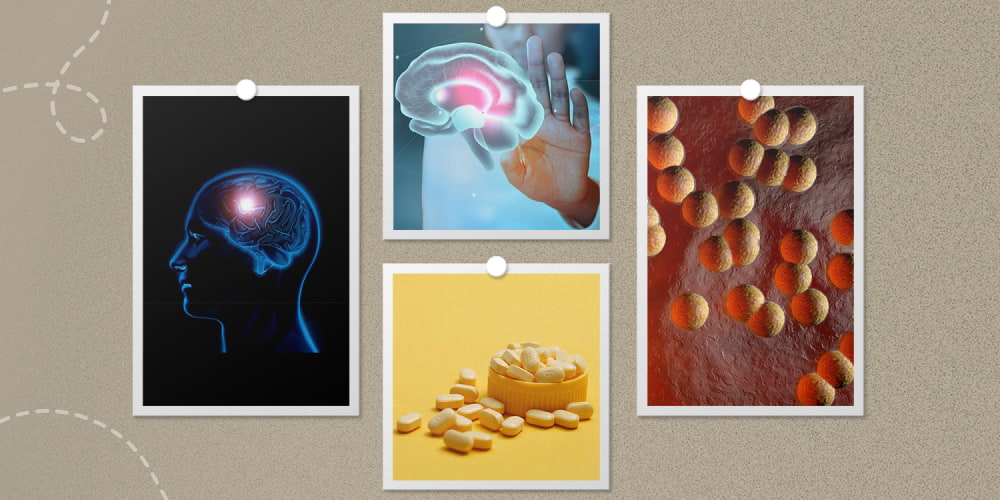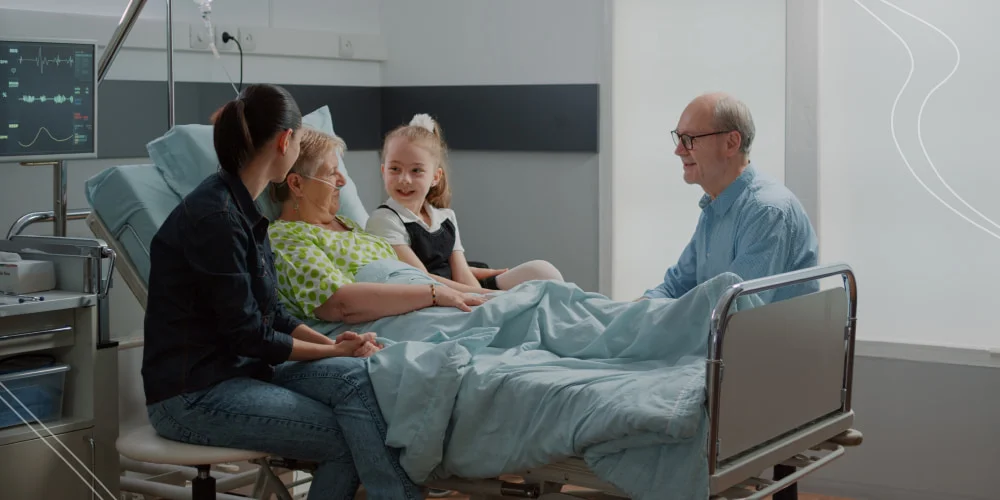Pick’s disease is one of the varieties of senile frontotemporal dementia, in which atrophic changes occur, most often in the frontal and temporal lobes of the brain. In clinical manifestations, it is similar to Alzheimer’s disease, but it is less common and more malignant. In women, it is diagnosed twice as often as in men.
Often, the disease is diagnosed against the background of mental disorders, but they are not considered the root cause of the disease, although they provoke its development. Not only the temporal and frontal lobes can undergo atrophy – sometimes, it also goes beyond and affects the subcortex. At the same time, there is no inflammation; vascular disorders are either absent or weakly expressed.
The manifestation of disease begins in the anterior frontal regions of the brain, which immediately affects a person’s behavior and personality characteristics. Later, the temporal lobes undergo changes, which are responsible for intelligence, memory, and concentration. The cortex of the speech analyzer is also destroyed, which immediately causes speech problems.
Unlike other neurodegenerative pathologies in psychiatry, the disease is characterized by deep damage to the entire lobe of the brain and not just part of it. First, the upper layers are affected, then the process extends inward.
Symptoms of Pick’s disease
Symptoms
The severity of symptoms and their set depend on the stage at which Pick’s disease is. The main signs of the disease:
- Loss of moral principles. The patient can relieve their natural needs in inappropriate places, not control their behavior, make improper statements, selfish character traits are exacerbated, and in general, the behavior becomes asocial.
- Immediate realization of instincts. The possibility of waiting disappears – all the physiological needs of the patient must be realized as quickly as possible. For example, bulimia may develop – eating large amounts of food uncontrollably even after satiety.
- Speech problems. It becomes indistinct. There are multiple repetitions of jokes, words, and individual phrases that can be traced; this is called the phonograph record symptom.
- Mood swings. It can range from euphoria to complete apathy; moreover, it can take only a few minutes between this.
- Dementia. Its severity depends on how the atrophic processes in the brain develop. But in general, emotional instability, periods of disinhibition and rigidity, loss of desires, goals, and complete lack of a will can be traced. Depression may develop, and sometimes – a combination of inappropriate behavior with euphoria.
The more Pick’s disease progresses, the more severe the symptoms become:
- lack of understanding of the speech of others;
- loss of basic skills in counting, writing, and reading;
- inadequate perception of what is happening around;
- memory losses;
- inability to consistently and logically perform actions;
- in the end, profound dementia, disorientation, and loss of self-care skills develop;
- if at first, such violations are episodic, then by the end of the second and third stages, they become permanent, progressing to the complete destruction of intellect.
The death of patients with Pick’s disease is most often caused by a combination of several factors:
- cerebral insufficiency;
- pressure ulcers infection followed by sepsis;
- congestive pneumonia due to constantly being in a horizontal position;
- ascending pyelonephritis, etc.;
- the changes affect the physical and mental spheres of a person. Some develop obesity or, on the contrary, exhaustion; their intellect suffers greatly – vocabulary gradually decreases, a person loses previously acquired knowledge.
Causes of Pick’s disease
The etiology of Pick’s disease has not yet been clarified. There are “family” episodes of the disease, but it is more often diagnosed in siblings than transmitted from parent to child. Nevertheless, the hereditary factor is completely refuted.
The etiological factors are:
- Negative impact on humans, in particular on the brain, chemicals;
- Incorrect dosing and/or frequent use of anesthesia;
- Mental disorders;
- Not the main, but a provoking factor can be a lack of B vitamins, traumatic brain injury, intoxication. Some experts believe that a disruption in the metabolism of tau protein, a component that is an element of the cell membranes of neurons, can also become a provoking factor.
It occurs mainly in the elderly after 50 years old. The risk group includes female patients over 50–55 years old, in whose family there are cases of this type of frontotemporal dementia. Traumatic brain injuries and infections do not serve as a provoking factor but significantly accelerate and aggravate the course of the disease.
The disease can be diagnosed in younger people from 40–45 years old. But at this age, it progresses slowly, the symptoms are poorly expressed, so patients rarely go to the doctor, and at the time of diagnosis, the second stage is already revealed. The debut is usually not so pronounced and can manifest in increased anxiety, impaired control over their actions, depressive states, which the patients usually justify by stress or other similar reasons.
Stages of Pick’s disease
The disease is divided into three stages. From detection to the end of the third stage, a maximum of 10 years passes, more often 6-7.
Types of pathology:
- First stage. It is characterized by disinhibition, actions that have no motive. For example, a patient may have a leveling out of basic instincts, a lack of control over their actions and emotions. Another characteristic feature of the onset of the disease is selfishness. In addition, libido sometimes increases, sexual disinhibition occurs. There are speech problems – multiple repetitions of the same words, sentences, or stories. The emotional sphere at this stage is relatively stable – most often, there is euphoria, which manifests itself in high spirits, but it can suddenly be replaced by complete apathy. There is no memory impairment yet, but a person at this stage cannot explain their strange behavior or justify it with impatience.
- Second stage. All of the symptoms described above are aggravated. Focal signs of frontotemporal dementia appear, and speech becomes even less intelligible. It is difficult for the patient to understand and assimilate information; they may forget events that happened long ago or very recently. It can be difficult for them to count and perform purposeful movements – fine motor skills are impaired. At this stage, the disease is almost identical to Alzheimer’s, but there are no epileptic seizures. Another characteristic feature is the imitation of the movements / facial expressions of other people and the automatic repetition of new words. The pain threshold also increases (cutaneous hyperalgesia).
- Third stage. It is characterized by complete insanity, decreased muscle tone, and, ultimately, the vegetative state of the patient. They cannot move, solve everyday issues, for example, eat, relieve their natural needs, or dress. At this stage, an incurable disability is diagnosed, which ends in death.
Frontotemporal dementia in the third stage is irreversible. At this time, the patient needs constant care. They are not able to perform even the simplest things since their capacity, both mental and physical, has been lost.
Treatment of Pick’s disease
Unfortunately, there is currently no effective therapy for Pick’s disease. The main task of the doctor after diagnosing this disease is to support the patient’s body and slow down the destructive processes in the brain. It can be:
- antidepressants;
- MFO inhibitors;
- neuroprotectors to stimulate metabolic processes in the brain and increase the activity of cells, which can slow down atrophic processes;
- sometimes anti-inflammatory therapy is needed;
- sedatives stabilize the psycho-emotional background, reduce aggressiveness.
Accordingly, treatment is selected based on the stage of the pathology and the presence of certain symptoms.
FAQ
- What is the name of the disease in which atrophic changes occur?
Pick’s disease is one of the varieties of senile frontotemporal dementia, in which atrophic changes occur, most often in the frontal and temporal lobes of the brain.
- At what age can Pick’s disease occur?
It occurs mainly in the elderly after 50 years old. But sometimes it can occur in younger people.
- How is Alzheimer’s and Pick’s disease different?
Alzheimer’s disease causes a rapid deterioration in the ability to read and write. Pick’s disease destroys these skills much later. People with Alzheimer’s disease are more likely to suffer from apraxia (inability to perform complex motor acts).
- What disorders of mental activity and mental functions are observed in frontotemporal dementia?
The central defect in patients of this group is impaired short-term memory and active information retrieval after interfering exposure, inactivity, impaired awareness of their own actions, and uncriticality.
- What are the functions of the frontal lobe?
The frontal lobes are responsible for voluntary actions, organizing and planning them, and mastering skills. In the dominant (usually left) frontal lobe, there are many zones responsible for the infectious aspects of a person’s speech, attention, and abstract thinking. Finally, note the participation of the frontal lobes in maintaining the vertical position of the body.
- Can dementia be treated?
Dementia is not currently considered a completely curable disease, although its symptoms can be alleviated. The most reasonable solution is to place the patient with dementia in a geriatric center under the constant supervision of qualified medical personnel.













Please, leave your review
Write a comment: